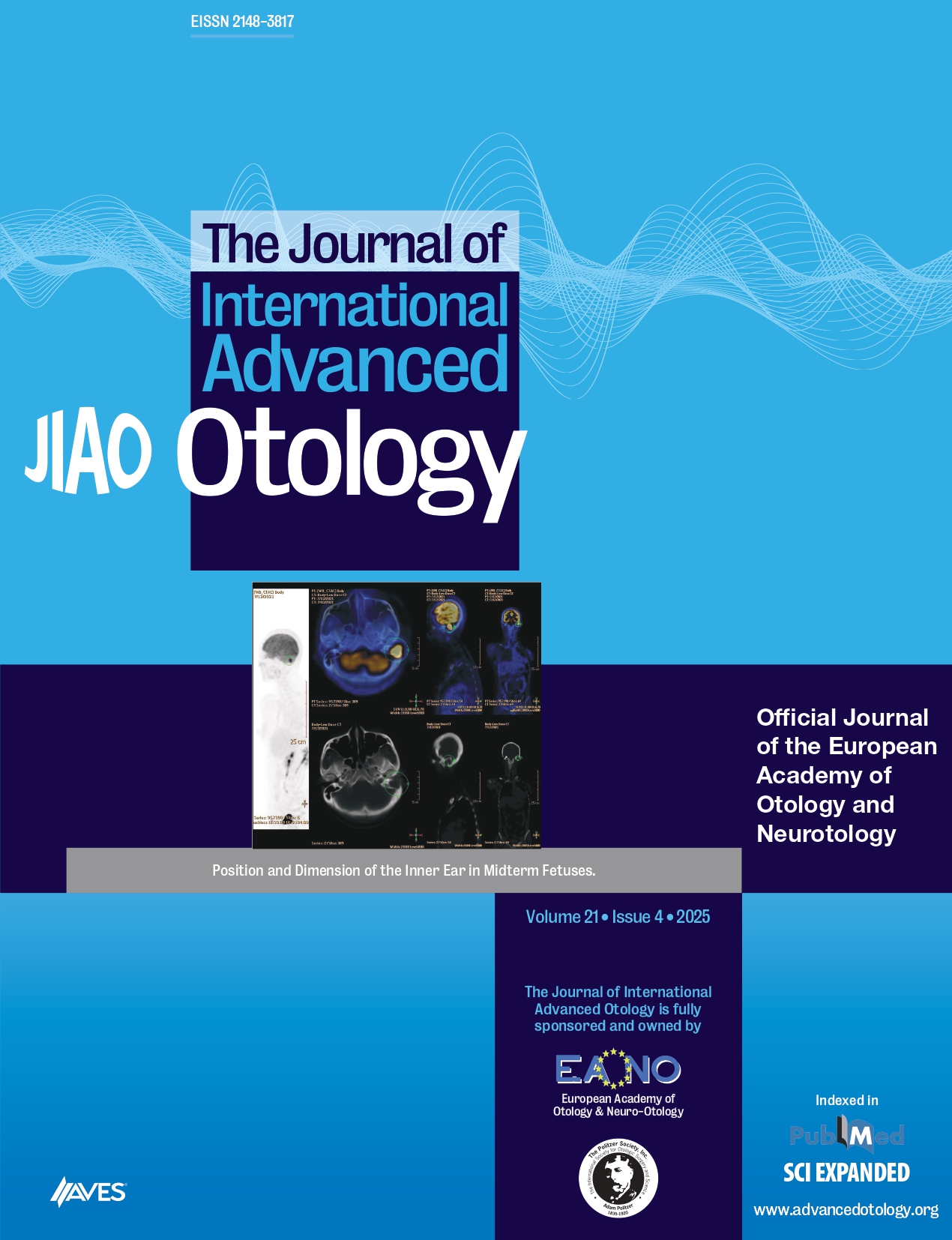Abstract
OBJECTIVE: Various types of laser, microdrill, and perforator are effectively used in the surgical treatment of otosclerosis. However, they have certain disadvantages along with advantages. The aim of this study was to evaluate the effects of carbon dioxide (CO2) laser and perforator stapedotomy techniques on audiological outcomes and postoperative vestibular functions via videonystagmography (VNG).
MATERIALS and METHODS: This prospective and randomized clinical study was conducted in an academic tertiary medical center. Sixty-nine patients diagnosed with otosclerosis who underwent stapedotomy were enrolled in this study. Patients were divided into two groups based on the technique used in stapedotomy: CO2 laser and perforator. Postoperative hearing gain and VNG findings were the main outcome measures. Subsequently, the two study groups were compared for analysis.
RESULTS: The preoperative air–bone gap was 32.7±8.9 decibel (dB) in the study population and it was improved to 12.9±8.4 dB after operation. There were no differences in VNG findings and vertigo symptoms between the laser and perforator groups at postoperative day 2. There was no significant gain difference regarding the air conduction, bone conduction, and air–bone gap between the two groups (p=0.294, p=0.57, and p=0.37, respectively).
CONCLUSION: Both CO2 laser and perforator stapedotomy have successful audiological outcomes with no difference in postoperative vestibular disturbance.



.png)
.png)